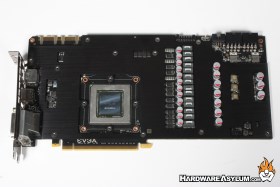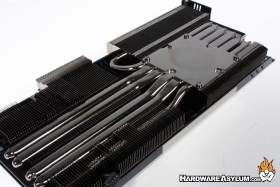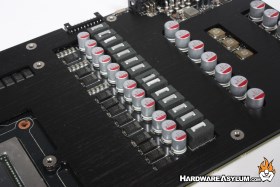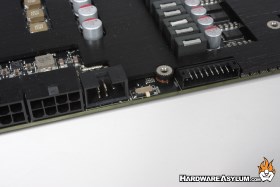EVGA GTX 780 Classified Video Card Review
Author: Dennis Garcia
Published: Wednesday, August 07, 2013
Classified Uncovered
Despite the size of the ACX Cooling solution there are only 5 screws holding it to the PCB. Four spring screws around the GPU and a fifth providing support near the upper edge. Removing these will allow the ACX to be removed and expose the components below.
The EVGA ACX cooling solution is a heatpipe based cooler comprised of six nickel plated heatpipes radiating from a single GPU cold plate. One of the reasons this cooler is so efficient stems from its dedication to keeping the GPU cool while the underlying heat spreader is handles the lower power components like the VRM and memory chips.
Unlike some of the competitor cooling solutions the ACX cooler is configured to cool in stages. The primary stage is the fan located directly above the GPU, this is where the bulk of the heat travels and happens to be the hottest part of the heatsink. Once that side becomes saturated the longer pipes located over the PWM take over and efficiently remove the excess heat due to the larger surface area.
For those wishing to watercool you have two basic options. The first will be to leverage the stock heatspreader and install GPU only waterblock. You can look for a custom full block coolers which, may or may not be available at the time you are reading this review. Given the unique PCB design the full coverage option may be difficult to find.
Unlike some of the competitor cooling solutions the ACX cooler is configured to cool in stages. The primary stage is the fan located directly above the GPU, this is where the bulk of the heat travels and happens to be the hottest part of the heatsink. Once that side becomes saturated the longer pipes located over the PWM take over and efficiently remove the excess heat due to the larger surface area.
For those wishing to watercool you have two basic options. The first will be to leverage the stock heatspreader and install GPU only waterblock. You can look for a custom full block coolers which, may or may not be available at the time you are reading this review. Given the unique PCB design the full coverage option may be difficult to find.
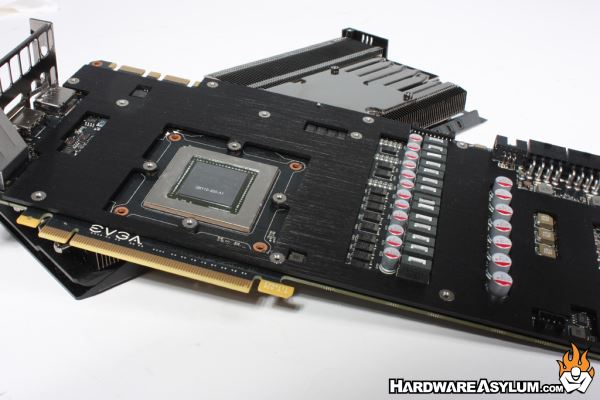
One of the factors that limit how much a video card can be overclocked is the size of the reference VRM. Due to the lower power requirements Nvidia determined that a 6-phase design would be enough for a standard GTX 780. A Hot-clocked video card often pushes the limits of the reference VRM and is why the EVGA GTX 780 Classified has something a little different.
You will find a total of 14 power phases on this video card with some dedicated to the GPU and others tasked with providing power to the memory and PCI Express. As you can imagine each of these power phases comes with a voltage adjustment however, GPU voltage will be one of the most important for raw performance.
You will find a total of 14 power phases on this video card with some dedicated to the GPU and others tasked with providing power to the memory and PCI Express. As you can imagine each of these power phases comes with a voltage adjustment however, GPU voltage will be one of the most important for raw performance.
Speaking of voltage you can check actual card voltages using the test points located along the top of the card. Test leads are not included but can be purchased from the online EVGA store.
Near the voltage test points you'll find a dual BIOS switch allowing you to choose different BIOS images. The 780 Classified comes with a stock hot-clocked image and a secondary BIOS with a higher power target for extended overclocking performance.
EVBot is also available but, from what we have seen isn't required for overclocking on air.
Near the voltage test points you'll find a dual BIOS switch allowing you to choose different BIOS images. The 780 Classified comes with a stock hot-clocked image and a secondary BIOS with a higher power target for extended overclocking performance.
EVBot is also available but, from what we have seen isn't required for overclocking on air.

